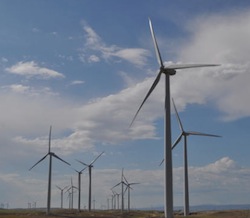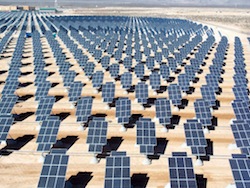 A series of “decision trees” are now available to help companies develop projects on contaminated lands owned by the Bureau of Land Management. Developed by the Environmental Protection Agency (EPA) along with the Department of Energy (DOE), the decision trees can be used to evaluate sites for renewable energy development ranging from solar to wind to geothermal and everything in between. There are nearly 490,000 sites and 15 million acres across America that may be options for renewable energy projects.
A series of “decision trees” are now available to help companies develop projects on contaminated lands owned by the Bureau of Land Management. Developed by the Environmental Protection Agency (EPA) along with the Department of Energy (DOE), the decision trees can be used to evaluate sites for renewable energy development ranging from solar to wind to geothermal and everything in between. There are nearly 490,000 sites and 15 million acres across America that may be options for renewable energy projects.
EPA spokesperson Mary Simms, said of the decision trees, “They can be used for evaluating former coal mine sites and nuclear waste sites. This decision tree targets sites such as brownfields, Superfund sites, RCRA sites, mining sites, landfills, abandoned parcels, parking lots, and commercial or industrial rooftops. Coal mines and nuclear waste sites are potentially contaminated lands that fit within the list of targeted sites.”
 Another advantage of the decision trees is that they can show project financiers, without needing to have specific renewable energy expertise, that the sites have already been pre-screened by a set of standard factors. This tool can save both time and money – a site assessment alone traditionally costs between $1,000 to $2,000. However, the tool does not eliminate the need for further investigation once you have your eye on a tract of land.
Another advantage of the decision trees is that they can show project financiers, without needing to have specific renewable energy expertise, that the sites have already been pre-screened by a set of standard factors. This tool can save both time and money – a site assessment alone traditionally costs between $1,000 to $2,000. However, the tool does not eliminate the need for further investigation once you have your eye on a tract of land.
Simms said there are some benefits of choosing contaminated lands. One, they may be cheaper to lease for purposed of renewable energy projects, especially if the site still needs a bit of cleanup. Second, they may already have power infrastructure in place on the land or nearby. Third, the renewable energy can be used to power the cleanup.
For more information on the decision trees, click here. The EPA is hosting a webinar on May 22, 2012 at 2 pm EST to help local governments get renewable energy projects built on contaminated land in their community.

